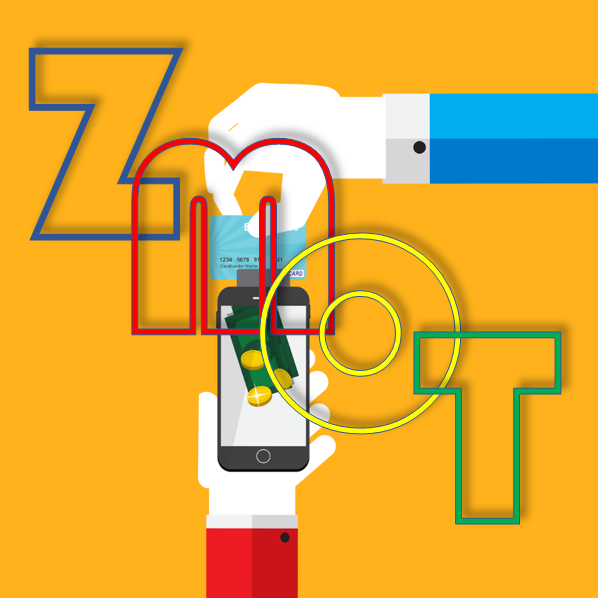Nothing is more important, or more satisfying, for a brand than creating loyal customers. According to Holly Hughes (@hollyjhughes), Chief Marketing Officer for BAI, loyal customers begin as happy customers. “It’s no secret,” she writes, “that happier customers are our most loyal, dependable customers.”[1] Although Hughes is expressly writing about the banking industry, her assertion holds true across industries. As a result, Hughes adds, “It’s more important than ever to learn just what keeps customers happy and loyal. That’s where customer journey mapping comes in. … Customer journey mapping is a proven, successful way to identify how customers make buying decisions — and where they get frustrated and back off, never to be seen again.” Bill Su (@DataWithBill), CEO of Humanlytics, points out the customer journey has changed dramatically over the past decade, which is another good reason companies need to learn more about that journey.[2] Hearkening back a dozen years, Su recalls, “Facebook was still competing with MySpace for traffic, Amazon was primarily known for selling books, and the iPhone was just released. Back in those days, the way we shopped for products was drastically different from the way we shop today. Most of us still trusted brick-and-mortar stores, we didn’t have price comparison services, and we were at the mercy of large corporations for discounts.” What has changed? Su writes, “Now, as a customer, you have sufficient access to smartphones and the internet to go beyond the shelf when evaluating the product.” The customer journey being described by Su is often called the digital path to purchase.
The Zero Moment of Truth and the Digital Path to Purchase
Most articles about the digital path to purchase stress how the data generated by online activity helps companies better understand consumers. We often forget that data also allows consumers to learn more about the products and services being sold. Su explains, before the rise of the digital path to purchase, the customer journey was traditionally depicted as having three important “moments.” The first moment is called the “Stimulus.” The Stimulus could be an advertisement that sparks interest in a product or service or it could be the realization a product needs to be replaced (e.g., the shampoo bottle is empty). The second moment, according to Su, is called the “First Moment of Truth.” This moment occurs when a shopper is confronted with an array of choices (e.g., which brand of shampoo should be bought) or, just as importantly, sees something they hadn’t planned on buying but is now considering purchasing the item. The final moment is called the “Second Moment of Truth” during which the consumer actually experiences the product or service.
Obviously, all three moments are important. Before the rise of the digital path to purchase, brands focused a lot on the First Moment of Truth (i.e., the in-store experience and point of sale). Back in 2012, the Marketing Science Institute published a study about the First Moment of Truth authored by four academics, Yanliu Huang, an Assistant Professor of Marketing at Drexel University’s LeBow College of Business Sam K. Hui, an Assistant Professor of Marketing, at New York University’s Stern School of Business, J. Jeffrey Inman, the Albert Wesley Frey Professor of Marketing at the University of Pittsburgh’s Katz Graduate School of Management, and Jacob A. Suher, a doctoral student in marketing at University of Texas, Austin.[3] They noted the following:
“Analysis shows that ‘deep’ considerations are more likely to result in an unplanned purchase than ‘wide’ considerations, suggesting that retailers should try to encourage ‘focused’ considerations whenever possible, such as avoiding promoting multiple brands in a product category. As another example, retailers should encourage shoppers to reference external information during an unplanned consideration, such as distributing store circulars/coupons not only at the entrance, but also at different in-store locations.”
With the rise of the digital path to purchase, Su observes, deep considerations by consumers and references to external information more often than not occur outside of the store setting. He explains, “Now, as a customer, you have sufficient access to smartphones and the internet to go beyond the shelf when evaluating the product. In fact, you might not be at the physical store at all since ecommerce stores like Amazon and Walmart.com have also become significantly more popular, serving as viable alternatives to the physical retail store. Therefore, when you need something like a shampoo, you are unlikely to go directly to the store to purchase, but rather go online to search something like ‘the best shampoo in the world’ — and that’s the Zero Moment of Truth. Coined by Google in 2011, the Zero Moment of Truth (ZMOT) describes how digital channels such as social media and search influence the customer decision journey.” The following video explains the importance of the ZMOT.
Su concludes, “The significance of ZMOT is that it is perhaps the first marketing framework that emphasized the importance of digital channels as a critical part of the customer decision journey.” How important are digital channels? According to Robert Williams, a report by digital ad platform Kenshoo found, “75% of search shopping impressions occur on mobile.”[4] He continues, “E-commerce channel advertising (ECA) saw a fivefold surge last year as marketers piled into Amazon Ads. Mobile remained the fastest-growing segment of paid search, with three out of four search shopping impressions occurring on mobile phones.”
Customer journey mapping
As Hughes pointed out earlier, learning what keeps customers happy and loyal is important to businesses. She recommends mapping customer journeys. She explains, “The goal is to learn how customers interact with a company, the good and the bad. The map documents the path potential customers can take. It generally involves three steps: how they realize they have a need, research possible services and make a buying decision.” That sounds a lot like the “moments” discussed above. She continues, “The map also includes how customers might navigate through a company’s website or mobile app, or what might happen when they visit a [physical location] or reach out to the call center. … But that’s not all. A good customer journey map also considers what happens after the purchase and points the way to customer follow-ups, marketing efforts and opportunities to solicit more business down the road.” The thing you need to remember is that digital path to purchase is not a single path but multiple, unique paths.
Marketers used to discuss the marketing funnel — a business model that guided consumers to purchase. Customer journey mapping has demonstrated that the marketing funnel model no longer exists. Allan Thygesen (@thygesen_allan), President of the Americas at Google, notes, “Google looked at thousands of users’ clickstream data from a third-party opt-in panel. We found that no two journeys are exactly alike, and in fact, most journeys don’t resemble a funnel at all. They look like pyramids, diamonds, hourglasses, and more. Digital technology and mobile devices have put people in control. We all now expect an immediate answer in the moments we want to know, go, do, and buy. And all of these intent-rich moments are creating journey shapes as unique as each of us. In many ways, intent is redefining the marketing funnel.”[5] He then asks an important question: “So what does that mean for brands?” His answer: “It means that marketers can no longer plan on a linear journey. Today, consumer choice heavily influences reach and frequency. They’re choosing to engage with brands that are relevant, helpful, and personal. People are demanding assistance, and the brands that offer it are the brands that will win.” Customer mapping can help you determine where and how your brand can be most helpful. Often a brand can be most helpful (and most effective) during the Zero Moment of Truth.
Footnotes
[1] Holly Hughes, “Customer journey mapping: The long and winning road,” BAI, 22 March 2019.
[2] Bill Su, “The evolution of consumer behavior in the digital age,” Medium, 16 November 2017.
[3] Yanliu Huang, Sam K. Hui, J. Jeffrey Inman, and Jacob A. Suher, “Capturing the ‘First Moment of Truth’: Understanding Point-of-Purchase Drivers of Unplanned Consideration and Purchase,” Marketing Science Institute, 2012.
[4] Robert Williams, “75% of search shopping impressions occur on mobile,” Retail Dive, 25 January 2019.
[5] Allan Thygesen, “Beyond the traditional marketing funnel — a new formula for growth,” Think with Google, September 2018.





